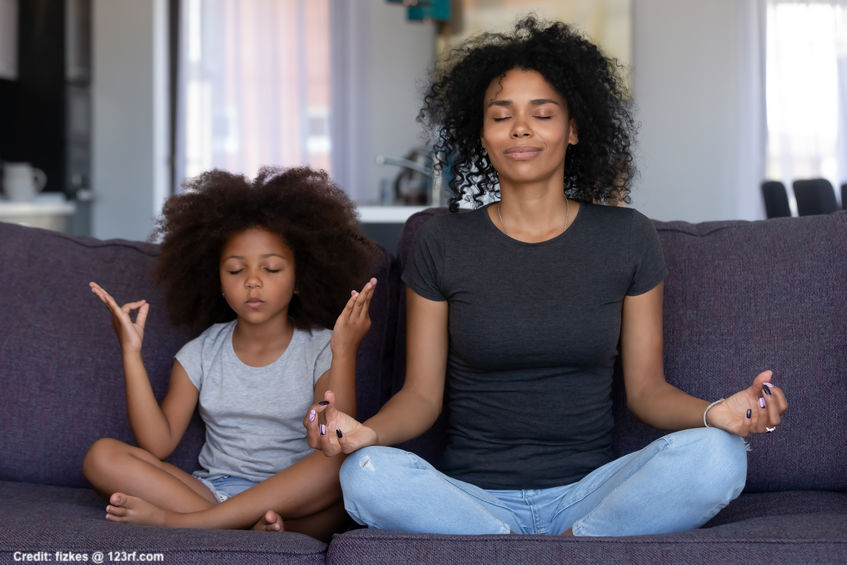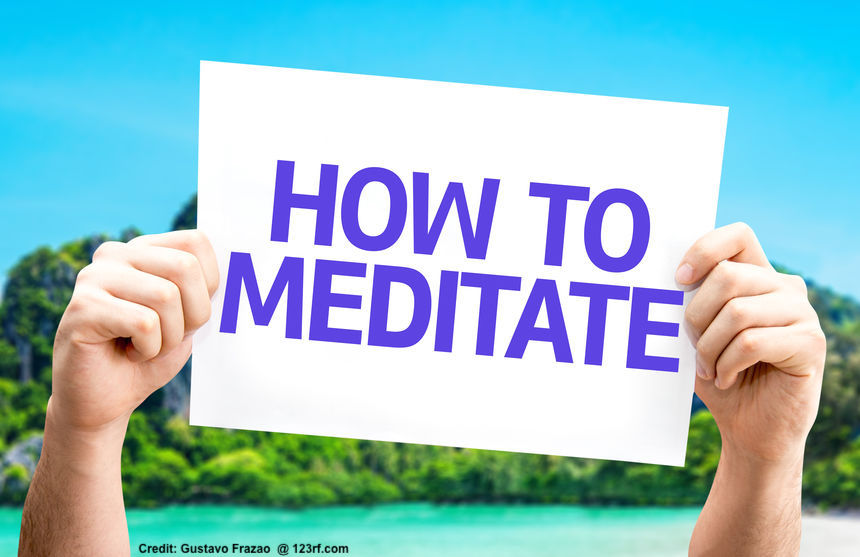Reading time (250 wpm): 8 minutes.

The word meditation engenders a whole spectrum of ideas and feelings:
- Some feel it is a technique for achieving great peace of mind. I count myself among them.
- Some believe it is a very difficult and uncomfortable practice and a great waste of time. I used to count myself among them. If you feel this way, I definitely understand your concerns.
This post is written with beginners in mind, especially those that identify as with the second group above. At some level, we are all beginners, all the time. Being a beginner is an exciting place to be.
If you have been meditating for a long time, you still may find some new information or useful tips here for you.
If you have some valuable experience with meditation, please leave a comment here with any additional suggestions that you believe are useful.
The Benefits
Meditation offers lots of benefits that have been documented by serious science. I just did a Google search for “meditation benefits”. I received a list of 177 Million pages of articles. Would you settle for a summary?
- Peace of mind and a relaxed focus of attention
- Relief of mental/emotional issues like depression, anxiety, PTSD, stress symptoms, age-related memory loss, post-partum blues, and ADHD
- Relief of physical conditions such as irritable bowel syndrome, fibromyalgia, psoriasis, chronic pain, high blood pressure, ulcerative colitis, migraine, headaches, premenstrual and postmenopausal symptoms, asthma, rheumatoid arthritis, epilepsy, and more
- Improved self-awareness, attention span, sleep quality, compassion, immune system function, self-esteem, self-acceptance, memory retention, cognitive skills, and decision making
- Reduction of addictive behaviors (emotional eating and smoking), risk of heart attack and stroke, inflammatory disorders, and heart disease
Is there anyone reading this who didn’t find something in that list that would benefit them? I think most of us over the age of 30 can find several desirable potential benefits from meditation. So before we dive into the “How to …”, let’s look at the most common objections.
The Myths – What It’s Not
Many of the reasons that people don’t meditate are based on myths and partial truths that are overblown.
- It’s hard to do – WRONG, nothing could be easier, unless you have unrealistic expectations.
- It takes a LONG time to get any benefits – WRONG, you can expect to obtain some benefits after a week of practicing for 10 minutes a day.
- You have to adopt certain spiritual/religious beliefs – WRONG, the only belief that is important is the belief that you can do this and receive benefits. If you persist in believing that it won’t work for you because you tried unsuccessfully previously, then it won’t work because of your belief that it won’t.
- It conflicts with my religion – WRONG, check with your religious leader. I think you will find that most major religions actually incorporate some form of meditation. And you can easily adapt these meditation techniques to strengthen your religious beliefs.
- I can’t do it – WRONG! Can you sit? Can you close your eyes? Can you breathe? Yes? Then you can meditate.
- But my mind won’t stop, it just keeps chattering away – GOOD, that’s not a problem. It is actually a sign that you really stand to benefit a lot from this practice. This is such a common misunderstanding that there is more about this in the next section.
- It’s uncomfortable – WRONG, if it is uncomfortable for you then either you have erroneous assumptions or your body has been trying to tell you something and you have been ignoring the messages so now it is shouting at you while you are able to hear it. Take note. This is valuable information.
The Monkey Mind
That incessantly chattering mental activity mentioned above is often referred to as “Monkey Mind”, not because any one believes that monkeys actually think that way, but because that mental activity sounds like a bunch of squabbling monkeys.
The problem is not that your mind carries on like that, the problem is that you seem to believe that means you can’t meditate when what it means is that you should do it. It means you stand to benefit a lot from the practice.
It is key to understand that the goal is not to get this to stop. The goal is to become aware of it and in doing so to realize that this chattering is not what you want to consume your precious, powerful consciousness. This awareness creates the opportunity to return your attention to what you do choose to focus on.
People who have been practicing meditation for a long time still experience this mental activity but, generally, less so than a beginner. And they have learned to accept it, recognize it as soon as it starts up, and refocus their mind on the peaceful focus they selected when they sat down to meditate.
Your monkey mind will tell you all sorts of untruths about you, it focuses on your perceived limitations. It will warn you about a bunch of fantasy dangers that await you at every turn in life, “There be Dragons” was the warning at the edges of ancient maps. You really don’t want this kind of constant fearful, “what’s the worst thing that can happen” thinking running your life. That would be like getting in your car and telling your GPS where you don’t want to go and all the reasons that you won’t be able to get there. Who would do that?
Be very clear, the goal of meditation is not to subvert or incapacitate this activity of your mind. The goal is to take charge of determining what occupies your consciousness and become the Supervisor of your mental activities. I call this state of mental supervision, Captain Consciousness. He is my mental super power.
Types/Styles/Forms of Meditation
There are several different types of meditation, some ancient, some relatively new; some based on eastern traditions, some western. There are devotees for each.
The most popular and most researched form of Eastern-based meditation is called Transcendental meditation. The most popular and most researched form of Western-based meditation is Mindfulness. You can find a lot about them by doing a Google search. There are many variations of each of these techniques and others that you can find, but the key is to first get started.
Below you will find a simple, basic meditation technique that includes the basic ideas of all forms of meditation. Try this, gain some experience before you go looking for the perfect practice.

Basic Meditation Instructions
The basic form of meditation, the process which is at the foundation of all methods I am aware of, is to practice focusing your attention on something peaceful. When your monkey mind starts chattering at you, the goal is to notice and return to your peaceful focus as soon as possible.
- Find a quiet time and place. Start with 5 minutes. Just 5 minutes. If it is important to you to limit it to 5 minutes, if you need to be somewhere else or do something else soon, set a soft, gentle timer. (A loud timer will startle you when you are really relaxed. This will cause a stress response partially negating the benefits you just received.)
- Sit comfortably with your eyes closed or focused on a peaceful object (examples below).
- Focus your attention on one of the peaceful objects listed below and notice when your monkey mind starts to:
- draw attention to a physical discomfort,
- remind you of something “very important”,
- lead you down a rabbit hole of distraction,
- dangle a BSO, Bright Shiny Object, that will get your attention (have you seen the movie Up? “Squirrel”)
- As soon as you notice the activity of your monkey mind, smile, take a slow conscious breath, and return your attention to your peaceful object of focus.
- You may go from distraction to distraction with barely any time focused on your peaceful object. You may get distracted almost immediately and the next thing you know the timer is going off. Good job! Notice. This is a practice.
- Congratulate yourself for practicing. You’re not an expert yet, that’s why you are practicing. Make a plan to spend another 5 minutes later today or tomorrow for sure. It’s just 5 minutes.
- Here are some examples of a peaceful objects for your focused intention:
- a candle flame
- a peaceful scene outside your window or a living plant right near you
- a mantra which is a word or short phrase that you repeat with each breath. It should not create an emotional response other than peacefulness. For example, ‘rest’, or ‘one’ or words from foreign or ancient languages, or very short prayers.
- there are lots of useful YouTube videos. Search for Yellow Brick Cinema. They offer dozens of continuous streaming videos of relaxing, peaceful music and accompanying serene images for free.
- there are dozens of Smartphone apps. Check this out: Calm, Mindful, Headspace, and dozens of others. They offer relaxing sounds and images or gentle guided meditations. A guided meditaton is one where someone with a soft, gentle voice talks you through the practice.
Once you have practiced this very basic form of meditation you will have a frame of reference for evaluating these other styles. And, there may be no need to go beyond this basic meditation, it is very powerful, especially when compared to not meditating at all.
Specifically, you discover what your monkey mind has been screeching about. This may help you understand some challenges you face. For example, if your mind is constantly telling you that your can’t do this or that, you may be hesitant to even try.
You also get to practice learning that your monkey mind is NOT who you are. You are the Listener, the Witness. This, in itself, is a powerful, peaceful realization. Pay attention to this the next few times you practice. If you can separate yourself from your monkey mind and become aware that you are not it but instead you are the Listener, the Witness, that is a huge opening that will lead to inner peace and comfort.
Try this for a week, five to 10 minutes a couple times a day and see what happens. Notice how you feel before and after each session. You may want to keep a notepad next to you to note any brief insights or ideas that come to you while you quiet your mind.
Challenges You May Experience at First
If you experience some physical discomfort during the mediation, take a moment to take care of it. If you have an itch, scratch it. If the way you are sitting causes discomfort, move. Try to keep your head and neck erect over your spine and to sit erect rather that slouching to avoid discomfort.
If you find you monkey mind insisting that something is very important for you to take care of, keep a notepad and pencil handy and make a brief note about it.
If you discover some other form of discomfort or distraction, next time have something at hand that will allow you to take care of it. If you get a scratchy throat, keep some lozenges handy. You get the idea. Be prepared.
In Conclusion
This can be the opening of a doorway to spiritual awareness and a closer relationship with your Higher Power if you choose. It can be a path to deep inner knowing, a greater understanding of who you really are, what you are capable of and where your heart and Spirit want to take you. It can be your path to inner peace and calmness.
Give it a good try. You are worth it. Let us know what treasures you find here. If you encounter any difficulties that I can help you with, ask about it in the Comments.


Like what you see?
Subscribe To
MyNewsletter
The best way to keep up with the latest insights is to get on my email list.
Most of my emails are either about Personal Development or Spirituality. If you indicate a preference, I will only send you emails that fit your interests.
When you sign up, I will send you a free ebook called:
Conscious Evolution: The Process of Consciously Transforming Your Life.
Congratulations, you have Successfully SUBSCRIBED!